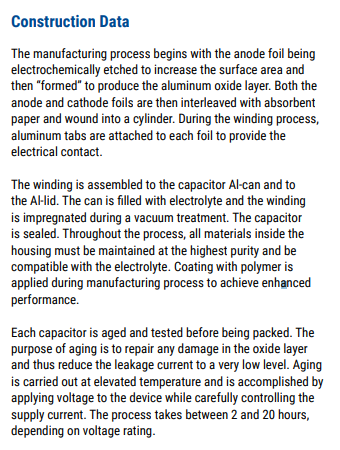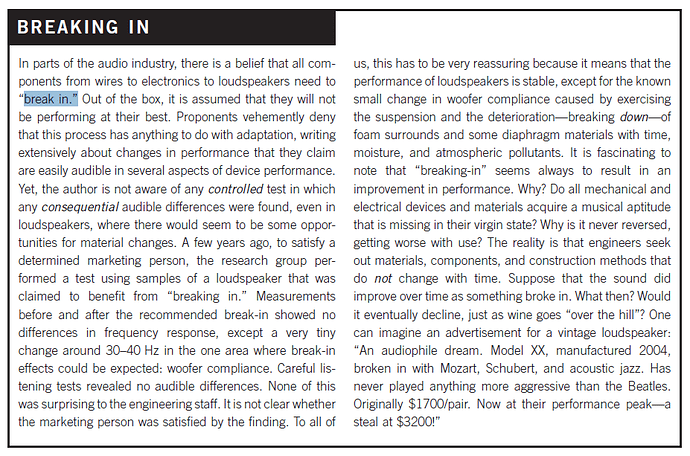Some of the statements and testing seems a bit ignorant and dismissive right away, so I’m not surprised they got to that result. Only measurement done was frequency response apparently, would have liked to see a proper suite of measurements to more accurately see what was going on, fr is only one piece of the puzzle. This really reads like “I haven’t seen any tests that I agree with, so I made one that I could agree with”. The comment about always improving performance also seems like a simple answer to me, it’s likely because a manufacturer isn’t going to design something to sound it’s best with brand new components, the design they come up with is likely made with components that have already gone through the process and have different values/characteristics/tolerances/etc than if they were new, so break in/burn in brings it closer to how it was designed to perform (if something was designed to sound best before anything was broken in that would be pretty dumb, and also I’ve seen people prefer things pre burn in more than post, more often than I’d thought I’d would, since it is all preference in the end). And things can sometimes change over time, drivers might wear out, some electronics will break down or change overtime, although that’s more wearing out than breaking in. A lot of things actually have to re break in if they sit for a long time, for woofers as an example sitting over a long time unused stiffens them again so even older speakers can re go through break in. Another example would be capacitors, as mentioned they will change when new in a forming process where the structure of the materials will change, and the chemistry of these capacitors sometimes makes it so after sitting unenergized it may need to go through that process once again
It’s really interesting that the concept of break in/burn in is so controversial in audio when it’s commonplace and accepted in other industries
Let’s ignore finding controlled testing examples for a second, why would this be so hotly debated enough to be considered controversial if it was easily proven or disproven buy a simple test? If it was really as open and shut as some make it out to be, would we be here having this discussion? Would there really be many thousands of threads and discussion around this topic? Would we see manufacturers have such wide differing stances in burn in and how they may accomplish that in their own facilities? etc, you get the point, it’s really not something that’s either easily proven or disproving as mattering, there’s merit to both sides, the truth is somewhere in-between. True actual scientific testing is extremely costly, intensive, and most importantly very time intensive, it is not as simple as taking basic measurements or creating a small single method single group listening test, there’s a whole lot more that goes into actual science, it’s quite a process, and you will rarely find anything in audio that’s truly scientifically proven, most of the time those budgets, energy, and resources will go toward something (unfortunately) more critical and beneficial/important to the larger public rather than putting all this time and resources into proving something for a small niche subset of a subset of a population so they can stop arguing in online forums lol
The real question at hand here is meaningful change though, so it’s really going to come down to the skill and the conditions of the listener, and the product at hand, and that’s typically going to lead to very mixed experiences every time. All I can really personally go off of are my own experiences, and with the amount of stuff I’ve tried and the amount of time I’ve put into audio, my results are… inconclusive, I have no idea lol, it all depends as I can see the argument for either side


